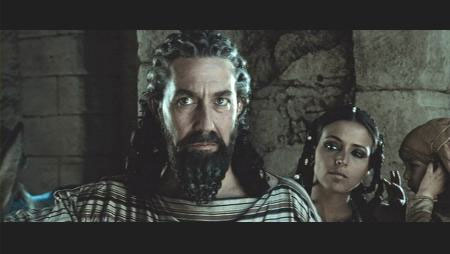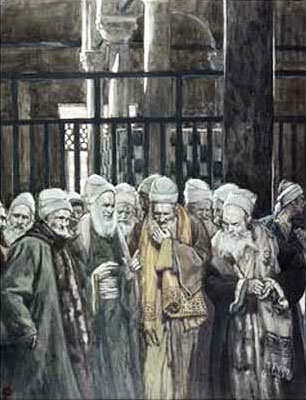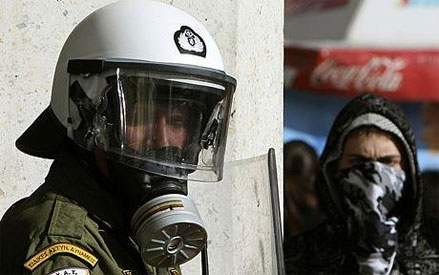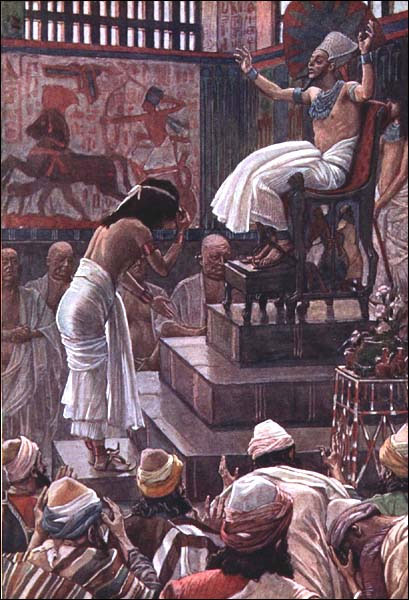Oct
6
2011

or The Changing of the Guard
Structure of Daniel 7 – Part 2
“You shall not at all do as we are doing here today — every man doing whatever is right in his own eyes.” (Deuteronomy 12:8)
And the people kept shouting, “The voice of a god and not of a man!” (Acts 12:22)
We’ve seen the source of Daniel’s Transcendent vision in Creation, the calling out of a new Gentile Hierarchy to shelter Israel in Division, and their forming, lifting up, into a new, greater Altar-Land at Ascension. We are up to Testing, and just like the original Covenant pattern in Eden — or just unlike it, actually — at the centre of Daniel 7 is the judgment of the deceiver under the Ethics of the Law.
Continue reading
Comments Off | tags: antichrist, Daniel, Herod, Literary Structure, Systematic typology | posted in Bible Matrix, Biblical Theology, The Last Days, The Restoration Era
Aug
28
2010
or Preterism is not a Dirty Word
 .
.
One thing that has struck me since becoming a preterist is how much evangelicals play down the badness of the baddies in the New Testament, i.e. the unbelieving Jews and Christian Judaisers.
Evangelicals would never believe that Jesus and the apostles were mistaken in their warnings of an imminent judgment (and let’s face it, this imminence is a facet of the New Testament that is inescapable). So the only other option they see as viable is a position that defies logic: an event that was near, at the doors, yet could happen at any time over next few millennia.
Continue reading
4 comments | tags: antichrist, Evangelicalism, Hermeneutics, John, Peter Leithart, Preterism | posted in Biblical Theology, The Last Days
Jul
1
2010

As I’ve mentioned here before, and in Totus Christus, the reference to the “man of sin” in Revelation is the sixth stanza of what is usually a seven stanza format. Only, in the case of this “Adam,” his seventh stanza is missing. [1] There is no Shekinah, no rest, no transfiguration, no bestowed glory. He crowned himself, so for him there would be no true crown.
Continue reading
Comments Off | tags: AD70, antichrist, Ark of the Covenant, Corinth, Covenant Theology, Herod, Literary Structure, Man of sin, Paul, Systematic typology | posted in Bible Matrix, Biblical Theology, Ethics, The Last Days, Totus Christus
Jun
25
2010

When it was pointed out to a Southern Baptist pastor at one of those (now quaint) prophecy conferences they still insist on holding, that there were more than ten European nations in the EEC, he replied that however many there may be now, there will be exactly ten when the Antichrist comes to power.
Continue reading
2 comments | tags: antichrist, Millennium, Postmillennialism, Satan | posted in Biblical Theology, The Last Days
Jul
14
2009

or Theonomy in the Bible
“…instead of Moses and Aaron challenging the powers that be, we have Herodian preachers crying “Peace, peace” when there is no peace. Nathan is not qualified to confront David because Nathan himself has been sleeping around.”
In his post Christianity as Comprehensive Cultural Tribunal?, timsmartt questions the validity of philosophy’s self-appointed role as an unbiased cultural referee and wonders whether Christianity should take that role:
Continue reading
Comments Off | tags: Aaron, Abraham, Against Hyperpreterism, antichrist, Daniel, Esther, Herod, Jethro, John the Baptist, Korah, Melchizedek, Mordecai, Moses, Nathan, Philosophy, Postmillennialism, Solomon | posted in Biblical Theology, The Last Days, The Restoration Era
May
30
2009
A House of Bread
There are two kinds of whiteness in the Bible, and an understanding of this explains a great deal. There is the whiteness of covering and the whiteness of uncovering. And, as mentioned, the Bible makes a great deal out of the concept of covering.
Bone Collector
Purge me with hyssop, and I shall be clean; Wash me, and I shall be whiter than snow.
Touching a corpse made an Israelite unclean. The remains of those slain in battle were marked with lime for two reasons: so that they could be avoided by the clean, and so they could be gathered up and burned to lime by the bone collectors. Jesus said that the righteousness of the Pharisees was like a whitewashed sepulchre. Not only were they full of the ceremonial uncleanness of broken Covenant, their so-called righteousness was actually a mark from God upon them. They would be gathered to their people not by the Father sending His angels to the four corners of the Land, but by the father of lies and his scavengers sent by God to clean the wound.
This image goes right back to Genesis. Like the angels, the Covenant scavengers, though demonic, are also God’s servants. They are the raven of Noah surviving on floating corpses until the water goes down; they are the scavenging dogs that lick up Jezebel’s blood; they are the maggots in misused manna and abandoned grapes (false bread and wine); they are the unclean birds and animals that screech and howl inside the corpse of a defeated Babylon; they are worms inside Herod ‘enthroned’ as a human Gehenna.
The whiteness of the Pharisees was the whiteness of Miriam’s and Gehazi’s skin-plague. It is the whiteness of flesh and bones exposed as unclean to the eyes of God. Satan himself appeared as an angel of light, but like the Pharisees, he was a false lightbearer, a tutor guiding his children the wrong way.
Continue reading
Comments Off | tags: antichrist, Boaz, Egypt, Ezra, Herod, Jezebel, Lampstand, Laodicea, Leviticus, Manna, millstone, Pergamum, Pharaoh, Pharisees, Priesthood, Rahab, Resurrection, Revelation, Ruth, Samson, Scavengers, Solomon | posted in Biblical Theology, The Last Days, The Restoration Era
Apr
10
2009
Beasts and Antichrists
“Scripture describes for us the sin of being antichrist, the Greek word being antichristos. There are four uses of the word in 1 John, and one in 2 John, and that’s it for the Bible. Surprising to many, the antichrist is not found in the book of Revelation at all. The recipients of John’s letter had heard that the antichrist was going to come, and indeed, John says, many antichrists had already come (1 Jn. 2:18). The antichrist is defined as one who denies the Father and the Son (1 Jn. 2:22). And the spirit of antichrist is a refusal to confess that Jesus Christ had come in the flesh (1 Jn. 4:3). The same thing is said again in 2 Jn. 1:7. The spirit of deception and antichrist is a rejection of Jesus come in the flesh.
So what is the sin of being an antichrist. Through long-standing misunderstandings about eschatology, the definition of this sin has gotten almost completely distorted. A common understanding is to see The Antichrist and The Beast as the same character out of poorly written end times novels. But this is not the case at all. In Scripture, a beast is a civil ruler, persecuting the Church. An antichrist is a false teacher from within, one infected with all the latest ideational leprosy. For a beast, think Stalin, Hitler, Nero. For an antichrist, think of a mild, soften-spoken Anglican bishop — one who denies that Jesus was God enfleshed.” www.dougwils.com
The distinction is between fallen Adam and the serpent. Ezekiel sarcastically called the bejewelled high priest the “King of Tyre” and the worship “Queen Sidon” – but they were still human, still “Adam”, still worshippers. In Revelation, however, the fallen priesthood was no longer human, but a beast, ie. political. A dragon with lamb’s horns and a speaking “graven image” picture a very different sort of idolatry.
Comments Off | tags: antichrist, Doug Wilson, Revelation, Tyre | posted in Biblical Theology






























